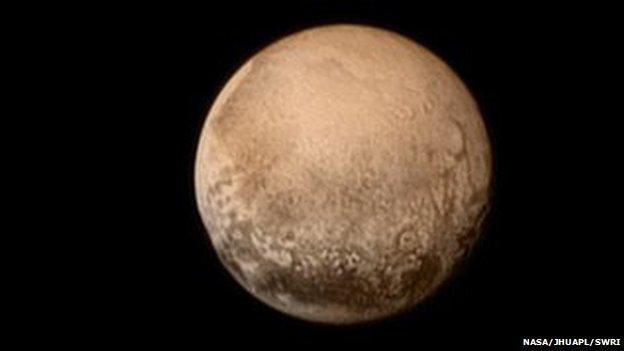Newsround's cool facts about Pluto
- Published

After nine years of travelling, and a three billion mile journey, the New Horizons probe is getting close to its fly-by of Pluto.
It's hoped it will take the clearest pictures ever of the surface and the data taken will help scientists to learn lots more about the dwarf planet.
You can keep up to date with the very latest on the fly-by on our live page.
But here's Newsround's run-down of some of the coolest things we already know about Pluto.
When did we discover it?
Pluto was officially discovered in 1930 by American astronomer Clyde Tombaugh, who was using one of the most powerful telescopes at the time at the Lowell Observatory in Arizona, USA.
Pluto was named by an 11-year-old schoolgirl from Oxford, England, who liked classical mythology and chose to name it after the ancient god of the underworld.
Is it a planet, or isn't it?
For more than 70 years Pluto was classed as a planet, until 2006, when the International Astronomical Union down-graded it to a dwarf planet.
A dwarf planet orbits the sun just like other planets, but it is smaller. Pluto is so small it cannot clear other objects out of its path.
How far away is it?
Pluto is around 3.6 billion miles away from the Sun.
As Pluto has an oval orbit, it means it can sometimes be slightly closer, and other times further away, depending on where it is in its cycle.
What is it Pluto like?
As Pluto is so far away from the Sun it is very very cold, and scientists estimate the temperature of the planet to be around 375 to 400 degrees below zero.
Scientists think Pluto is made of rock and covered in ice.
- Published14 July 2015
- Published4 June 2015
- Published9 July 2015
- Published3 October 2014
